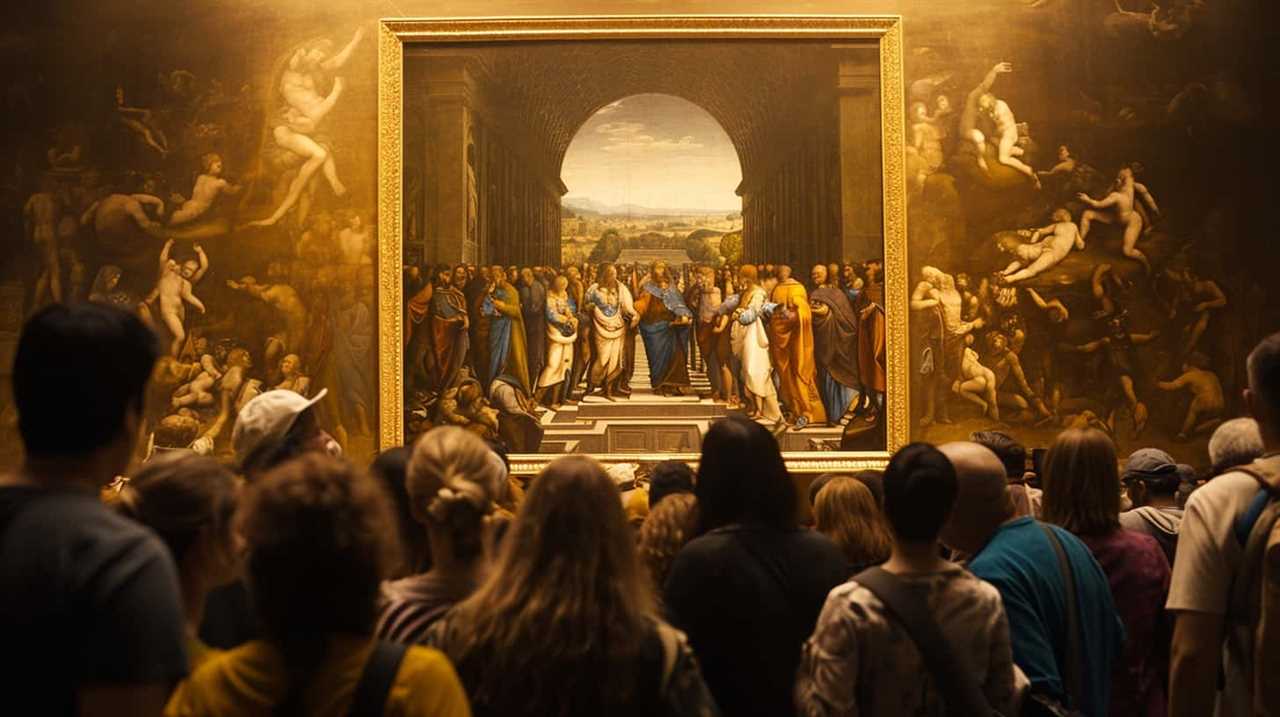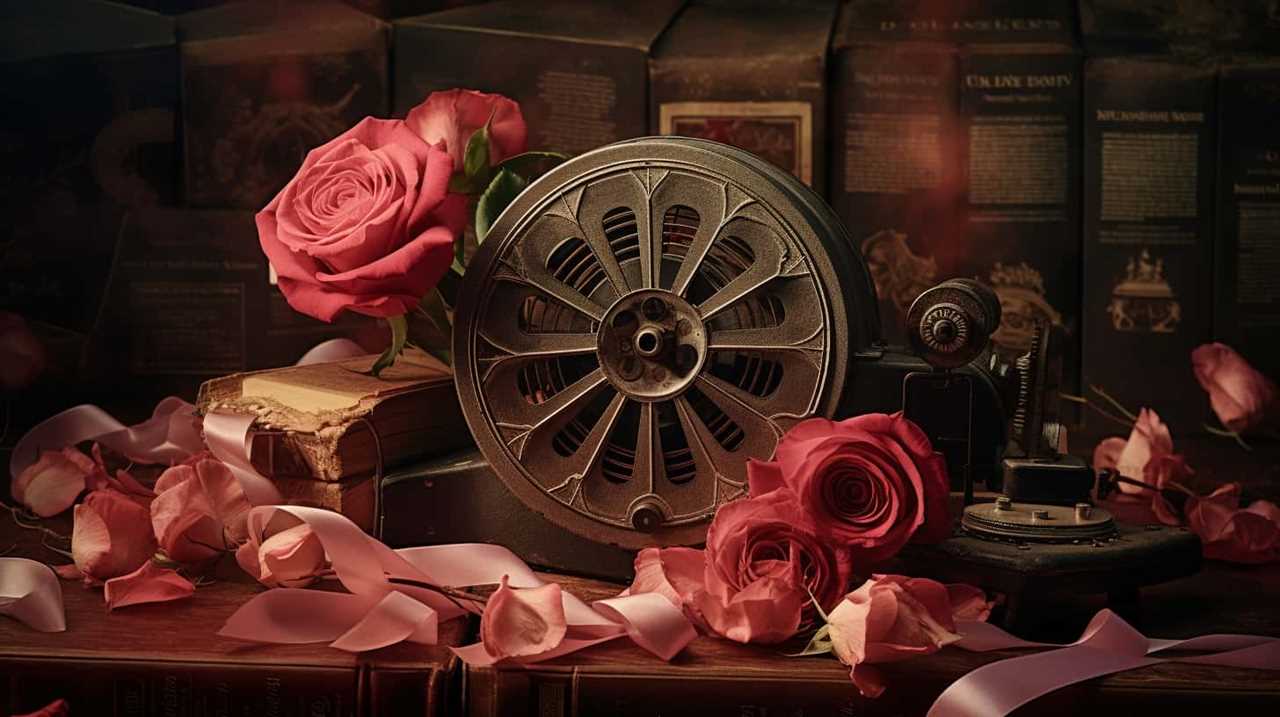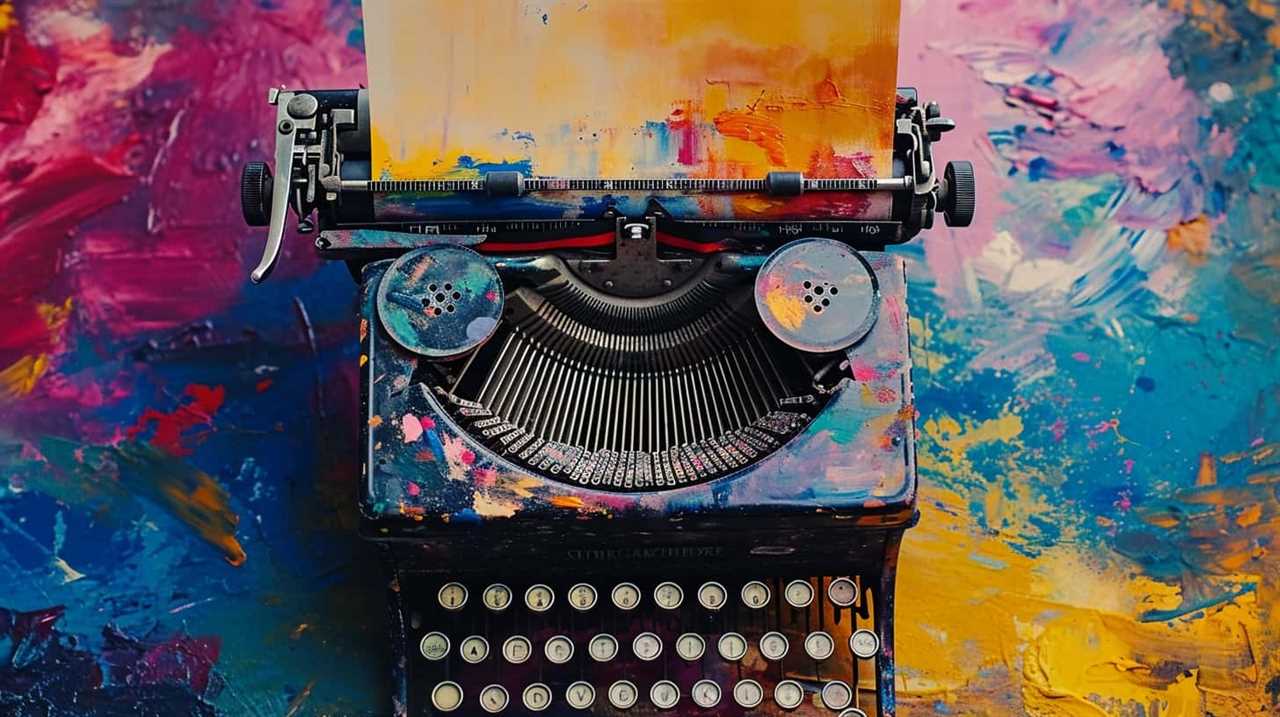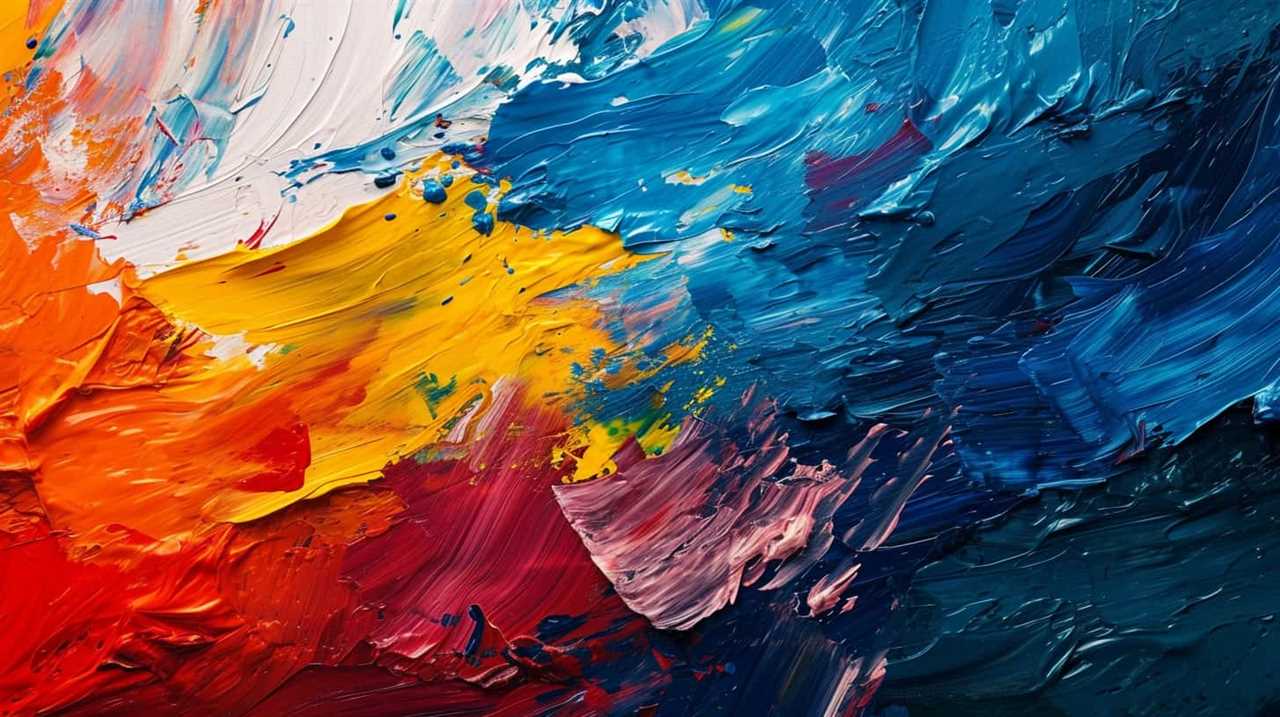Were you aware that art has the incredible power to elicit strong emotions in us? Studies indicate that 87% of individuals experience a profound emotional bond with art.
This connection is something that transcends time and space, as we are moved by the works of legendary artists from different eras and cultures.
In this article, we will explore four iconic quotes that highlight art’s emotional power and its impact on our lives. From Picasso’s profound insights to Van Gogh’s introspective reflections, Frida Kahlo’s raw expression of emotion, and Monet’s mesmerizing portrayal of landscapes, these quotes will deepen our understanding of the profound influence that art has on our hearts and minds.
So, let’s delve into the world of art and discover the incredible emotional power it holds.
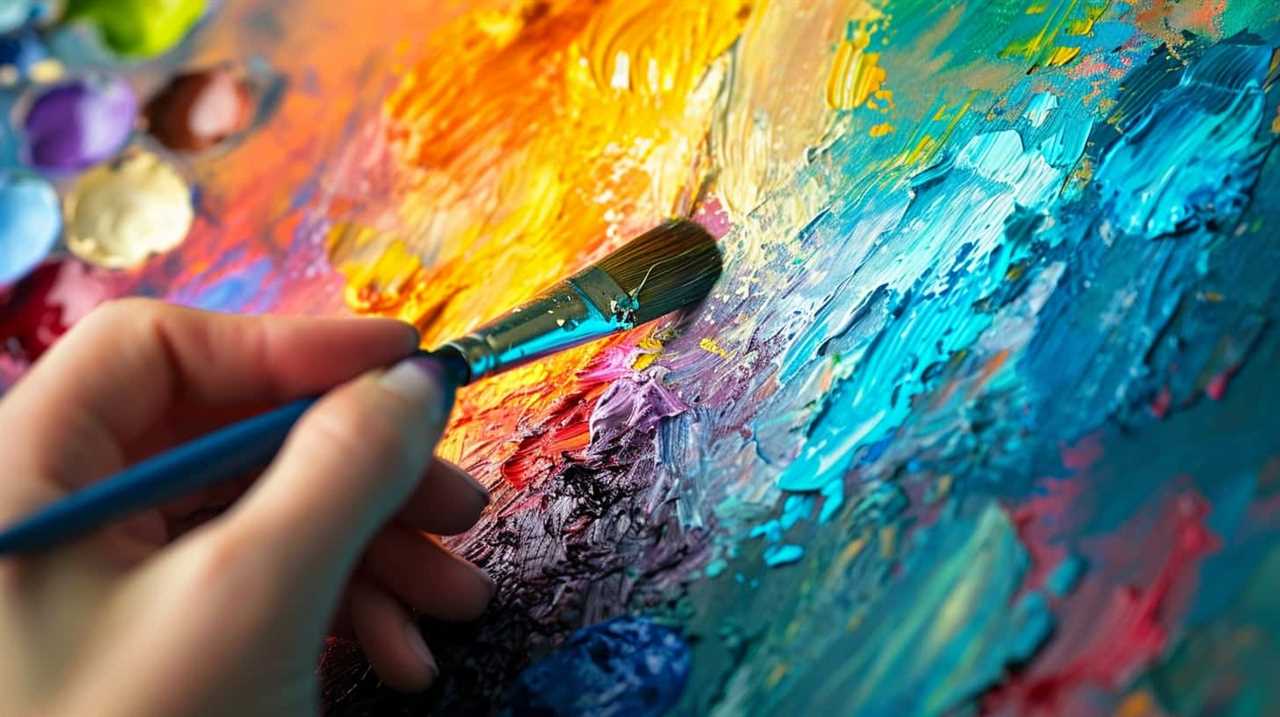
Key Takeaways
- Picasso’s departure from traditional conventions sparked experimentation and innovation in the art world.
- Van Gogh saw art as a therapeutic outlet for his troubled mind.
- Kahlo’s self-portraits offer a window into her inner world and convey raw emotions.
- Monet’s color palette played a crucial role in conveying emotions in his artwork.
Picasso’s Insight on Art and Emotion
In exploring Picasso’s insight on art and emotion, we’re amazed by the profound impact it has on our lives. Picasso, known for his revolutionary cubist approach to emotion, redefined the way artists express feelings through their work. His paintings, such as ‘Les Demoiselles d’Avignon’ and ‘Guernica,’ showcase a fragmented and distorted representation of emotions, challenging traditional notions of beauty and realism. Picasso’s ability to capture the complexity and depth of human emotions through his innovative style has greatly influenced contemporary artists.
Picasso’s cubist approach to emotion allows for a more nuanced and multidimensional representation of the human experience. By breaking down forms and rearranging them in a non-linear fashion, Picasso was able to convey the many layers and facets of emotions. This approach encourages viewers to engage with the artwork on a deeper level, as they’re required to analyze and interpret the fragmented forms, much like the fragmented nature of emotions themselves.
Furthermore, Picasso’s influence on contemporary artists can’t be overstated. His unapologetic departure from traditional artistic conventions paved the way for artists to explore new techniques and perspectives in expressing emotion. The cubist movement sparked a wave of experimentation and innovation in the art world, challenging artists to push the boundaries of what’s possible in capturing the essence of emotion.
As we delve into Van Gogh’s reflections on the power of art, it’s important to acknowledge the lasting impact Picasso has had on the art world and the way in which we understand and experience emotions through art.

Van Gogh’s Reflections on the Power of Art
How did Van Gogh reflect on the power of art to evoke emotions?
Van Gogh’s reflections on the power of art were deeply intertwined with his own mental health struggles and his unique artistic techniques. Here are three key aspects to consider:
- The expression of emotions: Van Gogh believed that art had the ability to express the depths of human emotions in a raw and profound way. Through his art, he sought to capture the essence of his own emotional experiences, often using bold and vibrant colors to convey intense feelings of joy, sadness, and anguish.
- The healing power of art: For Van Gogh, art wasn’t only a means of expressing his emotions, but also a therapeutic outlet for his troubled mind. He saw painting as a way to alleviate his inner turmoil and find solace in the act of creation. Through his art, he found a sense of purpose and a way to confront his inner demons.
- The importance of artistic techniques: Van Gogh’s artistic techniques played a crucial role in evoking emotions in his artwork. His use of impasto, thickly applied layers of paint, created a sense of texture and depth that added to the emotional intensity of his paintings. Additionally, his bold brushwork and vibrant color choices enhanced the emotional impact of his art, making it more visually striking and evocative.
Frida Kahlo’s Artistic Expression of Emotion
Continuing our exploration of the power of art to evoke emotions, let’s now delve into Frida Kahlo’s unique and expressive approach to artistic expression.
Frida Kahlo, a renowned Mexican artist, is well-known for her captivating self-portraits that offer a window into her inner world. Through her art, Kahlo achieved a profound level of emotional expression that resonates with viewers to this day.
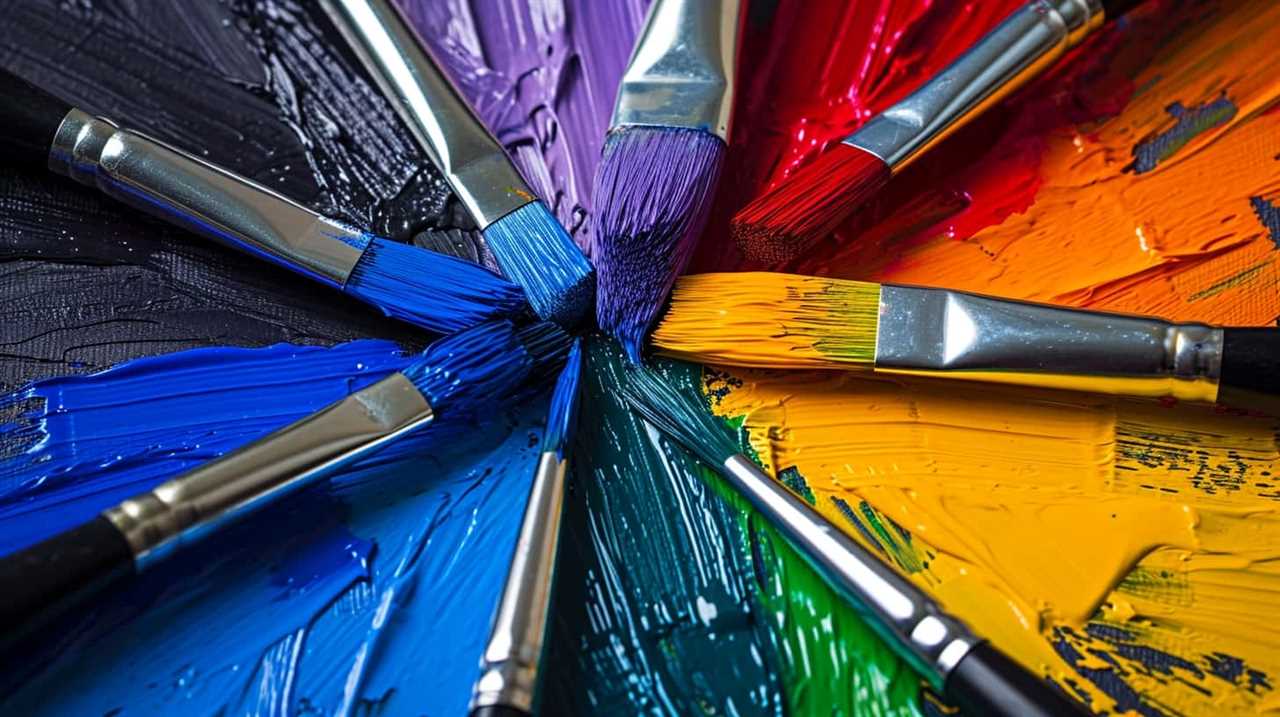
Kahlo’s self-portraits serve as a testament to her ability to convey raw and intense emotions. In her paintings, she explores themes such as pain, identity, and personal struggles. By depicting herself in various states of vulnerability and anguish, Kahlo invites us to partake in her emotional journey. Her use of vibrant colors, symbolic imagery, and meticulous attention to detail further enhances the emotional impact of her work.
Furthermore, Kahlo’s art can be seen as a form of therapy for her. Throughout her life, she endured physical and emotional pain stemming from a debilitating bus accident and a tumultuous marriage. Through her art, Kahlo found solace and a means to process her experiences. It served as a cathartic outlet for her emotions, allowing her to transform her pain into something tangible and meaningful.
Monet’s Impressionist View of Emotional Landscapes
Let’s now shift our focus to Monet’s impressionist perspective on capturing the emotional essence of landscapes. Monet’s color palette played a crucial role in his ability to convey emotions through his artwork. His use of vibrant and contrasting colors brought life and energy to his paintings, allowing viewers to feel the emotions that he experienced while observing the landscapes. The colors he chose weren’t necessarily realistic representations of nature but rather a reflection of his emotional response to the scene.
The influence of nature on Monet’s emotional landscapes can’t be underestimated. He spent countless hours observing nature, studying the way light played on water, or how shadows fell on a field. This deep connection with nature allowed him to translate his emotional response to the scene onto the canvas. His brushstrokes and use of light and shadow were carefully orchestrated to evoke specific emotions in the viewer.
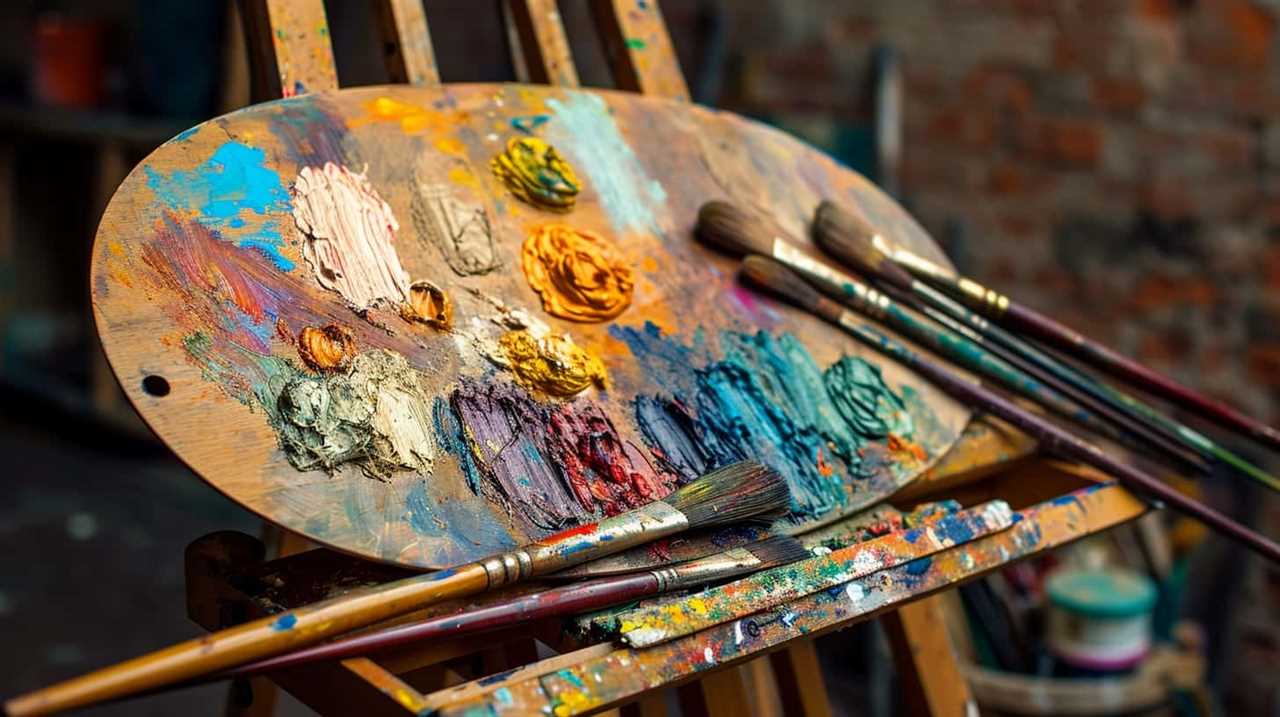
Monet’s impressionist view of emotional landscapes revolutionized the way art was perceived. By capturing the fleeting moments of nature and infusing them with his own emotions, he created a new way of experiencing and understanding the world. His ability to convey emotions through his artwork continues to inspire and captivate audiences to this day.
Frequently Asked Questions
What Are Some Other Famous Quotes by Artists About the Emotional Power of Art Besides the Ones Mentioned in the Article?
We have found several other famous quotes by artists that highlight the emotional power of art. These quotes provide insight into the impact art has on mental health and the role of art therapy in healing and self-expression.
How Did Picasso’s Insight on Art and Emotion Influence Other Artists of His Time?
Picasso’s profound understanding of art’s emotional power revolutionized the way artists approached their craft in the 20th century. His insight greatly impacted contemporary artists, leading to the evolution of the concept of art and emotion during that era.
Can You Provide Examples of Specific Paintings by Van Gogh That Reflect His Belief in the Power of Art?
Examples of Van Gogh’s paintings that showcase the power of art include "Starry Night" and "The Bedroom." Picasso’s insight on art and emotion influenced other artists, while Frida Kahlo’s personal experiences shaped her artistic expression. Monet’s impressionist style portrayed emotional landscapes.

How Did Frida Kahlo’s Personal Experiences and Struggles Influence Her Artistic Expression of Emotion?
Frida Kahlo’s personal experiences and struggles deeply shaped her artistic expression, influencing contemporary art. The intersection of her pain and creativity allowed her to create powerful works that resonate with raw emotion.
How Did Monet’s Impressionist Style Contribute to His Unique View of Emotional Landscapes?
Monet’s impressionist style allowed him to capture the essence of emotional landscapes with vibrant brushstrokes and bold colors. His artistic expression, influenced by Picasso and Van Gogh, was a testament to the power of art and paralleled Frida Kahlo’s exploration of personal experiences.
How Do Female Creators Discuss the Emotional Power of Art in Their Quotes?
Female creators artistic expression is often described as a deeply emotional experience. In their quotes, they explore the power of art to evoke feelings and create connections. They discuss the transformative nature of their work, highlighting how their unique perspective as women shapes their artistic endeavors and emotional impact.
Conclusion
In conclusion, these four iconic quotes highlight the profound emotional power of art.
Like a brushstroke on a canvas, art has the ability to ignite a fire within our souls, to stir our deepest emotions and provoke introspection.
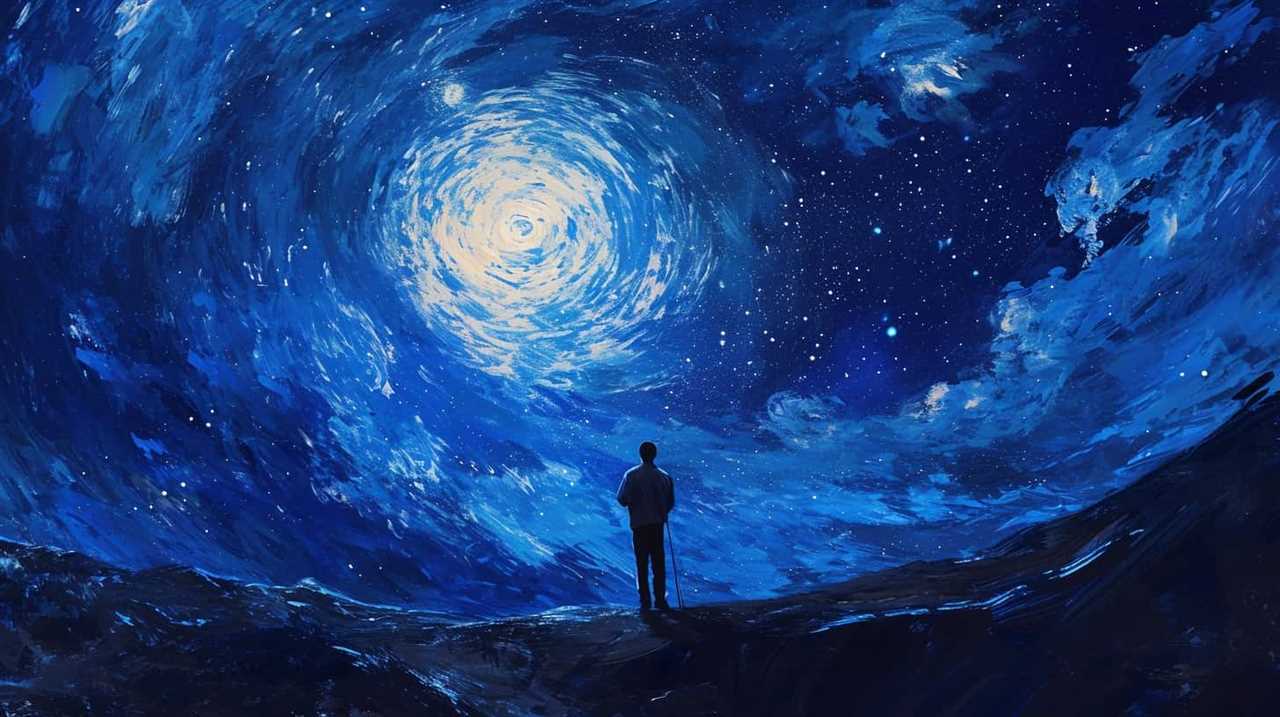
It’s a mirror that reflects the complexities of the human experience, offering solace, healing, and inspiration.
Just as a symphony resonates within our hearts, art has the remarkable ability to transcend time and space, connecting us to the universal language of emotions.
Lauren’s talent in writing is matched by her passion for storytelling. Her love for books and deep understanding of culture and entertainment add a distinct flavor to her work. As our media and press contact, Lauren skillfully bridges the gap between afterQuotes and the broader media landscape, bringing our message to a wider audience.
